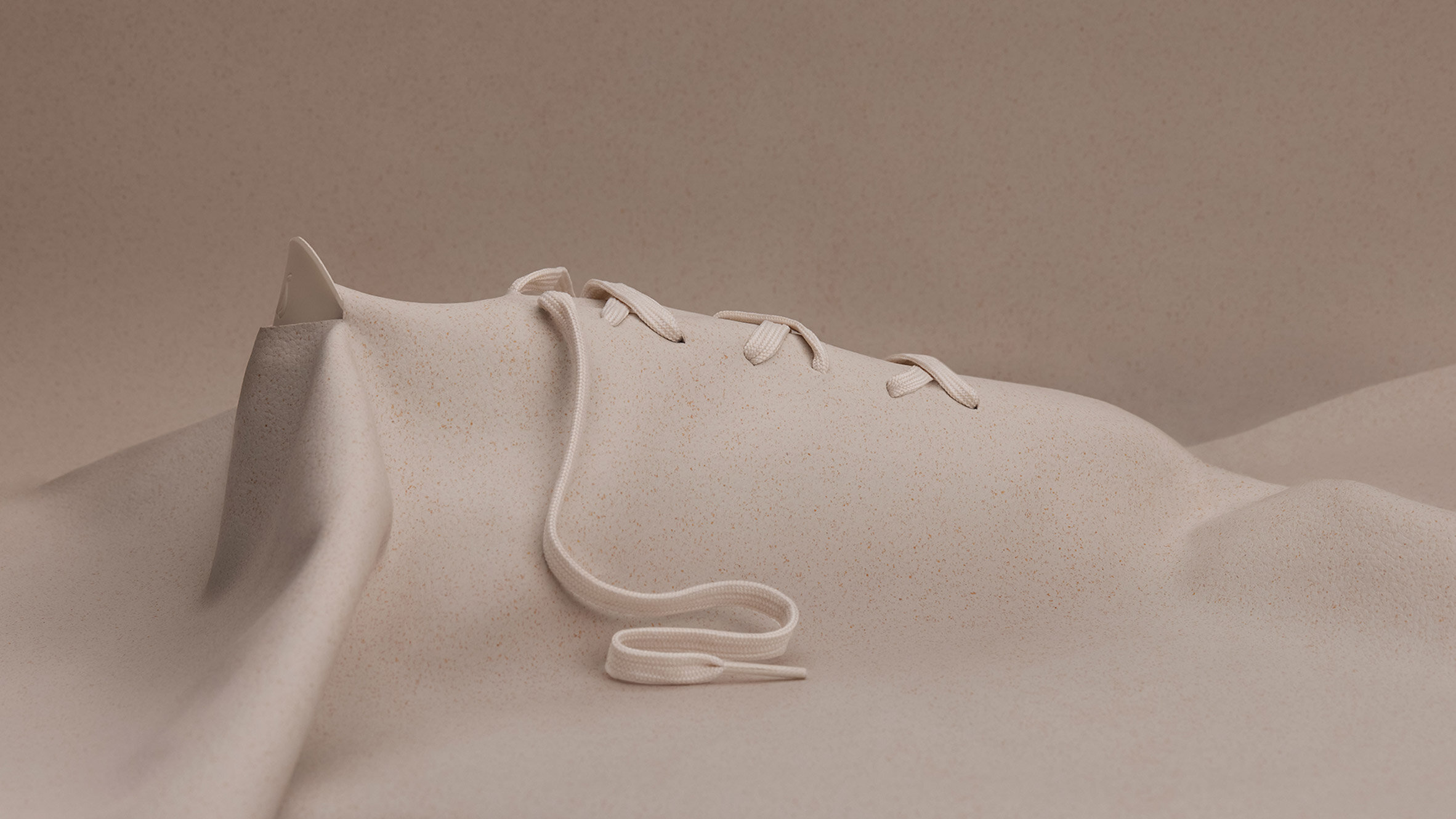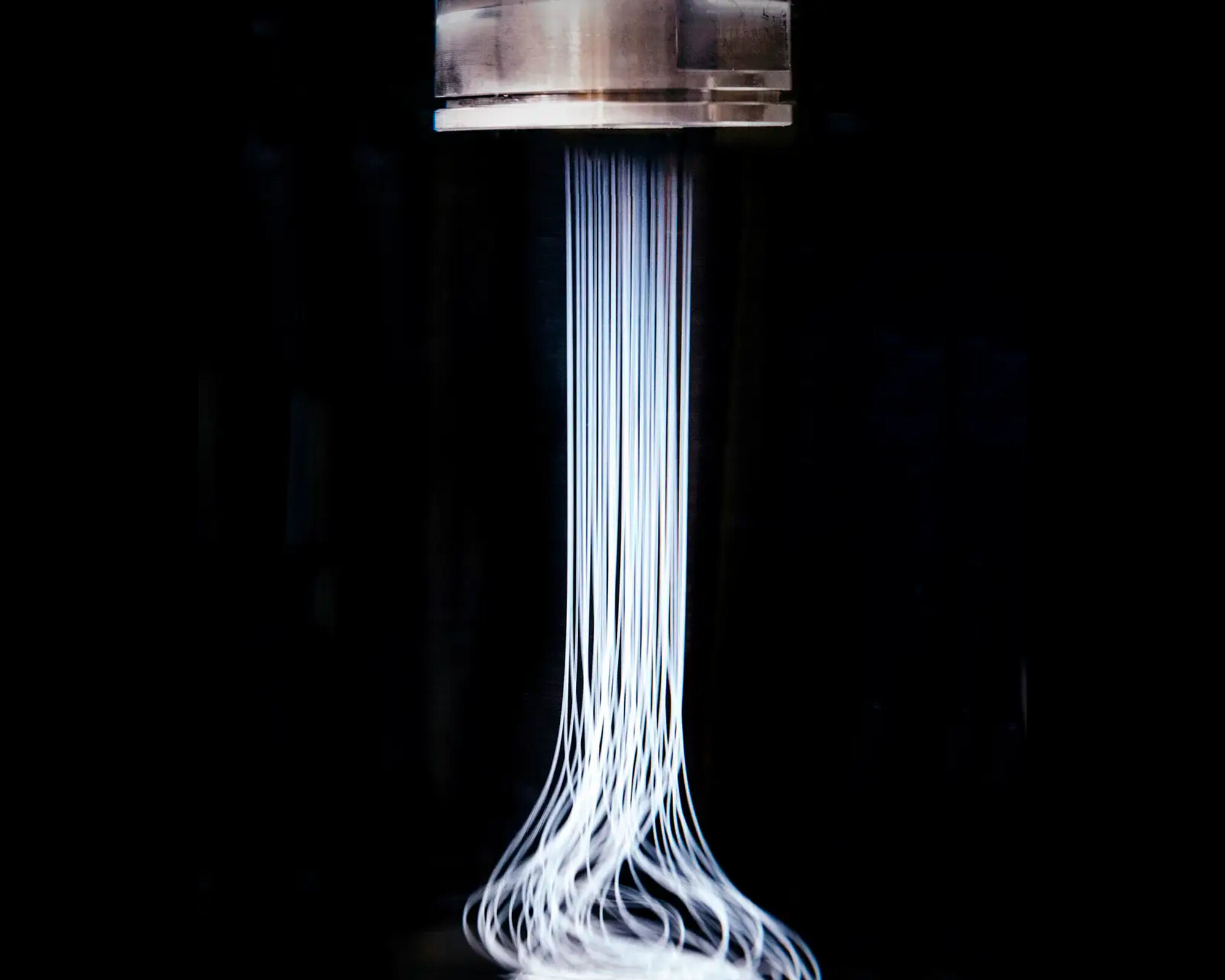Mind Your Step 001: Sustainability
The footwear industry has become characterised by the convergence of design and tech studios in recent years. Now, scientists are invited to the party. It’s at these seemingly dysfunctional congregations that these collaborators work towards one aim, a sustainable footwear future…
Sometimes smoke and mirrors, other times state of the art innovation. Sustainability has become one backed by buzz, disruption and bright ideas, particularly by the people taking nature into their own hands. Whether it’s mycelium leathers or algae-derived yarns, biomaterials are quickly becoming the footwear industry’s go-to sustainable investment.
As footwear giants and micro-enterprises alike fight for their foot in the biomaterial door, Conceptkicks scopes out the playing field. From brands to scientists, we spoke to the people pushing the boundaries to investigate the importance of biomaterials within the sustainability narrative. In the first investigation, we work to uncover the basics of bio-textiles.
Fig.1 Mylo by Bolt Threads
You've probably heard of mushroom leather, mycelium or Mylo. These are all iterations of mushroom-derived biomass, the material alternative that has a firm grip on the industry today. With the likes of Bolt Threads, Natural Fibre Welding and Mycoworks all producing fully scalable alternatives to real leather, this biomaterial feels like the natural entrance point into the complex system that encompasses material possibilities.
A majority of the mushroom-derived products on today’s textile market utilise mycelium: “This is the roots,” explains Huantian Cao, co-director of Sustainable Apparel Initiative at the University of Delaware. Using his hands to emulate the structure, Cao interlaces his fingers to show me how mushroom roots came to form a spongy structure that he is currently testing to use as the soles of shoes. He continues: “While the mushroom roots grow they consume wooden particles, like sawdust, for food. The roots form a web structure with the substrate and this is essentially good for moulding.”
What makes his material different from those being adopted by brands like Adidas, Stella McCartney and Nike is its purity. The professor admits that relying solely on biomatter is not feasible within current market parameters due to the drawbacks that manifest in the functionality and durability of the material. The structure is too brittle and vulnerable to abrasion without additives like rubber and other less sustainable alternatives.
Does anyone feel like we have hit a hurdle already?
Enter, Natural Fibre Welding - the brains behind Mirum, a biobased leather currently being used by Allbirds. Greg Stillman, Director of Business Development spells it out: “The key ingredients we use are natural rubber, then we use vegetable oil and what we call an aesthetic filler package.” The brand sources these materials from FSC certified sources and local producers, but that doesn’t mean it’s free from transparency challenges: “We recognise that both rubber and vegetable oils are not uniformly and universally produced in sustainable ways. So, our next big move is to start onboarding regenerative sources. For us that's the gold star, that's the final frontier.”
Fig.2 Mirum by Natural Fibre Welding
Why is this not the first mountain that the Natural Fibre Welding team is trying to surmount? Because they are driven by something much smaller - molecules. Through patented chemical technology, the innovation studio works to ensure that the polymers in their materials remain in their most natural state. By adopting this overarching technical approach, the company can apply its material platform to almost any textile.
“We follow a conceptual approach of moulding and shaping,” Stillman divulges, saying: “At a molecular level, we want to keep those natural polymers intact and just change the shape, the form factor, the morphology of them to get the specific performance profile we need.” This means that any material that Natural Fibre Welding gets its hands on will be fully recyclable. Not only by the scientists who created it but also by Mother Nature who will be able to accept these untainted polymers back into her ecosystem as easily as her human colleagues.
“A solution can't just serve a niche part of the market if it is sustainable.”
(Greg Stillman, Director of Business Development at Natural Fibre Welding)
Another leading sustainable brand making a beeline for the value of being able to split materials with ease is Climatex. The Swiss textiles company, a sustainable and planet-friendly child of the late Gessner AG, produces simplified textiles from virgin natural sources and recycled fishnets. By combining a maximum of three virgin material sources in what the company calls a ‘textile lock’, each component can be separated using 40% less energy than more traditional means used to separate materials like polyester.
“For me, it’s not the questions of whether we are taking polymers from nature, oil fields, or fish. Whatever we use, we like to make sure that we are using materials that we can bring back to the earth and reuse,” concludes Fredy Baumeler, CEO of Climatex.
As with any industry innovation, it’s not all happy families. Some healthy competition exists between the trailblazers at Climatex and Natural Fibre Welding. Both brands are simultaneously working towards the phasing out of the use of natural virgin material sources and the implementation of an entirely cyclical production process. Within which all production is a re-production of their waste. Both Stillman and Baumeler place a huge emphasis on the importance of a self-fulfilling production cycle to the future of sustainable footwear.
Fig 3. Algiknit Instagram Posts
Let’s step back and see where we are at. So far, the textile companies at the table in this investigation all create sheets of material. Both Natural Fibre Welding and Climatex have conquered fast production of industry-ready material lengths. It’s about time that room is made for threads.
“We wanted to make a yarn because you can do so much more with them,” says Aleksandra Gosiewski, co-founder and COO at New York-based AlgiKnit. Filling the market-gap and firmly taking her seat in the scene.
Through dedicated research and development, AlgiKnit pioneered bio-based threads. What was once a novel project quickly became a viable material alternative with help from external investment and an enduring drive to make a material difference. After a long period of experimentation, the team set their source on a regenerative, fast-growing, carbon-sequestering plant. Seaweed.
“Sneakers were a big inspiration,” shares Gosiewski, explaining: “Shoes are only made to last for one or two years yet the materials that are used to put all the components together are toxic and last for thousands of years. There is a disconnect.” The team at AlgiKnit are dedicated to creating the go-to ingredient for the shoes of the future. By honing their production of regenerative yarn and backing the power of fibre biodegradability, the team aims to become ubiquitous across the textile industry. Allowing footwear, interior, fashion and product designers all to make positive planetary impacts with ease.
Fig. 4 Vivobarefoot Ultra III Algae Shoe
Another material manufacturer making moves in sea-derived biomatter is BLOOM. The algae-based material is considered to be a cornerstone product in the world of biomaterials after hitting the footwear market with the first commercially viable algae and EVA blended insert in 2016.
In the same year, the textile developers at BLOOM fell into conversations with the team at Vivobarefoot. Their collaboration resulted in a shoe that showcased the industry’s first widespread injection moulded bio-foam upper. On this collaboration, Chief Design Officer Asher Clark says: “It was very organic. We dived in and the product became a poster child for the bio movement in footwear. It was nice for a small brand like ours to make a mark.”
It’s this collaboration that brought BLOOM firmly into the spotlight and to the attention of brands like New Balance, Nike and Yeezy who all have their fingers in the pot now too. New Balance’s collaboration with Reformation last year, made use of algae-based inserts and brought the brand’s iconic X90s well into the world of post-consumer recycled products.
Textile production from algae is made possible through a plasticisation process that involves heat, pressure and a lot of time! By deriving the material from this specific biomass, the company also naturally reduces the levels of phosphorus and ammonia that have become prevalent in water sources due to the toxicity of the unsustainable post-processes that the fashion industry currently engages with.
Fig. 5 Spider Silk by Bolt Threads
Despite the numerous angles that the various companies approach biomaterials and sustainability from, all of the front-runners share a dedication to the widespread adoption of not only their materials but their sustainable strategies too. This is epitomised in Vivobarefoot’s hyper-transparent communication strategy that showcases both the brand’s strengths and pitfalls as well as future strategies for design improvement. The brand is also working towards making its sustainability metrics and designs specifications available for industry-wide use later this year.
Natural Fibre Welding’s Greg Stillman puts it poignantly: “A solution can't just serve a niche part of the market if it is sustainable. If only one out of one million people can enjoy a product, it's not a sustainable solution because there are nine billion people on the planet. The solution has to be relevant to nine billion people.”
From wood and mushrooms to seaweed and everything in between, biomaterials is a fully charged sector of the footwear industry that feels like it’s ready to blow up. What’s clear is, the basics of biomaterials are not basic at all. It’s taken innovators, pioneers, competitors and risk-takers to get to where they are today. The future of sustainable textile possibilities is categorised by an infectious dedication and inspiring disruption that work simultaneously towards one goal. Getting biomaterials onto the feet of the masses.








